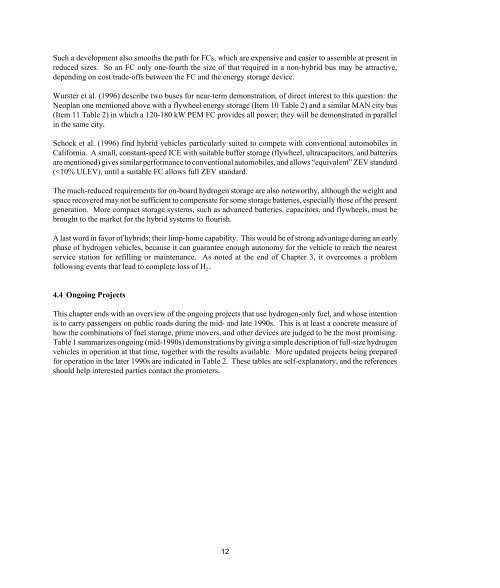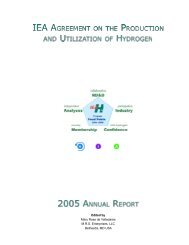Technology Status of Hydrogen Road Vehicles
Technology Status of Hydrogen Road Vehicles
Technology Status of Hydrogen Road Vehicles
You also want an ePaper? Increase the reach of your titles
YUMPU automatically turns print PDFs into web optimized ePapers that Google loves.
Such a development also smooths the path for FCs, which are expensive and easier to assemble at present in<br />
reduced sizes. So an FC only one-fourth the size <strong>of</strong> that required in a non-hybrid bus may be attractive,<br />
depending on cost trade-<strong>of</strong>fs between the FC and the energy storage device.<br />
Wurster et al. (1996) describe two buses for near-term demonstration, <strong>of</strong> direct interest to this question: the<br />
Neoplan one mentioned above with a flywheel energy storage (Item 10 Table 2) and a similar MAN city bus<br />
(Item 11 Table 2) in which a 120-180 kW PEM FC provides all power; they will be demonstrated in parallel<br />
in the same city.<br />
Schock et al. (1996) find hybrid vehicles particularly suited to compete with conventional automobiles in<br />
California. A small, constant-speed ICE with suitable buffer storage (flywheel, ultracapacitors, and batteries<br />
are mentioned) gives similar performance to conventional automobiles, and allows “equivalent” ZEV standard<br />
(













